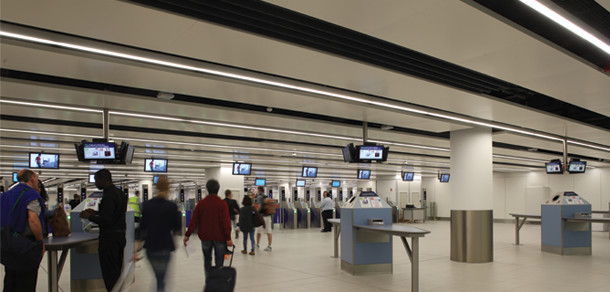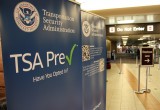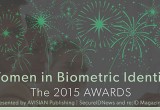The challenges of airport entry and exit in the U.S.
01 March, 2016
category: Biometrics, Government
By Kelly Vlahos, Contributing Writer, Security Industry Association
The United States may be the head of the class in a lot of things but experts say it’s far behind the rest of the word when it comes to biometric solutions for entry and exit at major international airports.
Global terrorism and a fluid migrant situation across Europe and the Americas emphasize the need to know who is coming into and out of the country. Other nations that serve as transfer points for tens of millions of international travelers a year are standing up technology that can identify and capture vital information about individuals while still getting them to their planes on time. But after more than a decade of trying, the U.S. government is still working on it.
Nearly a year ago, a host of security companies decided to make a crack at it. The Airport Entry and Exit Working group – a joint venture by the Security Industry Association (SIA) and the Security Identity & Biometrics Association (SIBA) – formed to offer a bridge to the Department of Homeland Security and U.S. Customs and Border Protection in the government’s quest for state of the art entry and exit screening for non-citizen passengers.
“We see the working group as yet another example of where bridging the gap that often exists between private sector innovators and government decision makers can yield benefits to both,” says Jake Parker, head of government relations for SIA. He says the interaction has already had some positive effect.
A series of federal statutes for biometric screening passed in 1996, and they gained urgency after the 9/11 attacks. A 2004 law required full implementation of biometric entry and exit for non-citizens. To date, biometric technology has been instituted at entry points at more than 100 international airports in the U.S.
But the exit piece has yet to get off the ground. While there were pilot programs in 2004, 2006 and 2009, a lack of clarity over how exit screening would take place prevented it from progressing beyond the initial pilot studies.
The latest effort, the DHS Apex Air Entry/Exit Re-engineering (AEER) project, is currently testing technology and processes for CBP at test sites.
DHS’ Apex Air Entry/Exit Re-engineering (AEER) project is currently testing tech and processes at a series of pilot sites in airport locations
The Airport Entry and Exit Working group, which consists of 19 biometric security industry companies, was invited to two site visits in the last year: the DHS Science and Technology Directorate’s Maryland Test Facility and the CBP Global Entry Enrollment Center at Dulles International Airport outside Washington, D.C.
There are varying impressions of both sites by working group members who were there, but as Parker points out, they are at least grateful to be in the loop. He was at the Dulles test center, where the vendors were asked after the tour what the government could improve. “That is the kind of dialogue we need to have,” he says.
According to member company representatives, the working group has had two key impacts. First, it has opened dialogue on the challenges of screening biometric technology, the testing of passport identification technology and comprehensive exit screening implementation. Second, it has spurred member meetings with government officials and testimony on Capitol Hill to promote both the policy and the solutions to back it up.
“By crafting a unified message for the Congress and speaking with one voice, we have created receptivity on the government side,” says working group member David Simon, COO of Secure Planet, a Virginia-based provider of mobile biometric verification and identification systems.
For its part, DHS says it likes the open communication. “In a program like Apex AEER, close interaction with key private-sector stakeholders – especially U.S. and internationally-based airport, airline and biometric technology industries – is critical in understanding the physical and operational conditions,” says John Verrico, spokesman for DHS Science & Technology Directorate, which is the lead on the AEER program.
Now that all stakeholders seem to be on the same page, notes Parker, “the challenge is to actually put it into practice.”
Why is exit so important?
According to Janice Kephart, former SIBA CEO who testified before Congress in April, the evolving global terror threat involves sophisticated means of manipulating one’s biographical data – name, passport and other paper verification – and can enable terrorists to slip through borders undetected. This makes advanced screening critical. Biometric identification – face, fingerprints, iris – can be instantly checked against advanced passenger data and the Office of Biometric Identity Management’s core database.
While getting a “hit” won’t necessarily mean a traveler will be stopped on the way out, officials will have better alerts to individuals on watch lists, outstanding warrants, and people who have overstayed their visas. The last is important because currently the U.S. government does not have updated and accurate metrics on annual overstays. “This data is vital for future decision-making by immigration, law enforcement and intelligence authorities after the fact,” testified Kephart.
Improvements to biographical screening at the borders “can never replace the efficiency, accuracy and speed that biometric solutions provide to assure that people seeking entry to or exit from the United States are who they say they are – and are not associated with nefarious information,” she says.
A buffet of solutions
Today screening at international airports ranges from capturing single or multimodal biometrics at simple automated kiosks at international boarding gates to more centralized capture at security checkpoints. Agents may use hand-held devices like tablets to obtain a traveler’s biographic and biometric data.
“I think the government is looking for more off-the-shelf solutions,” said John Hernandez, senior industry analyst with Frost & Sullivan’s Aerospace and Defense portfolio. Working groups can help get companies with the right solutions a chance to get noticed, even if they are not associated with a big contractor.
DHS is keeping its methods and what it is currently testing close to the vest, but it’s clear from public statements it is a variety at least. The facility in Maryland, according to the DHS Science & Technology Directorate, has been testing with a ready-made passenger manifest of 1,300 volunteers at a mock security gate to gauge wait-times and efficiency. Reports suggest DHS is eyeing FY 2016 for the initial field trial.




